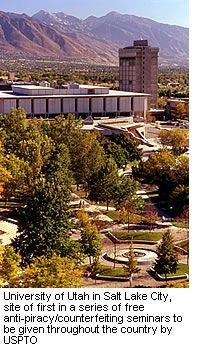CAFC Leaning Toward 'Procedural Approach' to Claim Construction
The specification specifically acknowledges that it is not the three blades themselves which solve the prior art problem of detrimental drag forces, but instead theThe court also noted that, in contrast to Markush group language using the word "consisting," the phrase "group of" is presumptively open. Furtherore, with regard to the numerical references in the claim, the court pointed out that
arrangement of three blades in a particular spatial configuration, stating "the
novel aspects of the present invention residing in the provision of three blades
set in the blade unit set in particular dispositions with respect to each other
and the guard and the cap." The written description likewise discusses
these parameters with respect to the relative positioning of each of the three
blades at length. These principles of progressive blade exposure and progressive blade span could apply equally to four or five blades. Such a geometric arrangement of three, four, or even more blades will achieve a closer shave and, at the same time, minimize excess drag. It may be that a four-bladed safety razor is a less preferred
embodiment. A four-bladed razor costs more to build, requires more parts, and
adds more frictional drag compared to the three-bladed version.
And, finally, with regard to the file history,The terms "first, second, and third" are terms to distinguish different elements of the claim, not terms supplying a numerical limit. Thus, the "first," "second," and "third" blades need not necessarily appear in that order or necessarily limit the blade unit to only three blades. Instead, these ordinal terms designate different blades within the "unit" according to their location and elevation. . . . . [T}he reference to "first," "second," and "third" blades was not a serial or numerical limitation, the claim does not follow a consecutive order (i.e., it does not discuss the second blade after the first). The claim is thus clearly not using the ordinals — first, second, third — to show a consecutive numerical limit but only to distinguish or identify the various members of the group. . . .
The defendant itself endorsed an open interpretation of "comprising" when itProfessor Hal Wegner calls this decision "Phillips Claim Construction Tea Leaves" and writes that the case continues a trend of panel opinions that maintain the full literal scope of a claim without narrowing the scope of protection to preferred embodiments:
argued to the European Patent Office (EPO) that a virtually identical claim in
Gillette’s European counterpart to the patent would not exclude an arrangement
with four or more blades. This blatant admission by this same defendant before
the EPO clearly supports this court’s holding that those skilled in the art
would construe the claims of the ’777 patent to encompass razors with more than
three blades.
The folks at the Federal Circuit Claim Construction Project would likely agree Their Federal Circuit Predicter tool estimated a 71% chance that this panel would use a procedural claim construction approach "characterized by adherence to a relatively strict rules-based hierarchy of interpretive sources, with a particular emphasis on the ordinary meaning of disputed patent claim language." Based upon their current data, the odds appear to be running at about 2:1 strongly in favor of such a procedural outcome in the Philips en banc decision:The case is of interest as a predictor of the [upcoming] en banc Phillips case because there is a well written dissent that fully expresses the countervailing view that the author of the majority opinion had once dubbed a “specification űber alles� approach. Thus, the matter was thoroughly thrashed out in the opinion making process. The dissent was written by Senior Judge Archer who is not a member of the en banc panel in Phillips.













